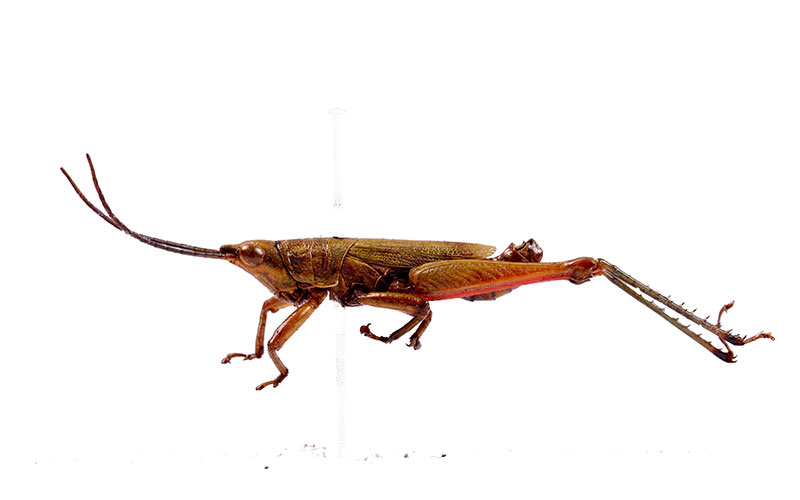Hop, skip and grasshopper
New grasshopper species discovered at Dampa Tiger Reserve of Mizoram

Guwahati, Aug. 7: Twenty-five years later, a survey team had reason to jump with joy, much like the grasshopper species they had just discovered at Dampa Tiger Reserve of Mizoram.
Sunil Kumar Gupta of the Zoological Survey of India said the grasshopper species, Tagasta mizoramensis, was collected in 1995 by a survey team and finally it has been described and named.
Kailash Chandra, the director of the Zoological Survey of India and also one of the authors of the new species, said the description of the species has been published in Zootaxa, a well known journal on animal taxonomy.
He said there are still hundreds of species, which are to be described, and for this to happen there is a need of national and international collaboration between the experts.
“This new species belongs to the family Pyrgomorphidae commonly known as bush hoppers or gaudy grasshoppers,” Gupta said.
Grasshoppers’ abode
The 35.4mm grasshopper was found near Teirei village in Dampa Tiger Reserve in Mamit district of Mizoram.
Dampa was declared a wildlife sanctuary in 1974 and was declared a tiger reserve in 1994.
Grasshopper comprise a group of jumping insects that are found in a variety of habitats.
Grasshoppers occur in greatest numbers in lowland tropical forests, semi-arid regions, and grasslands.
They range in colour from green to olive or brown and may have yellow or red markings.
Tagasta mizoramensis differs from all species by its hind wing, dark and not red.
Its body is green and has dark brown eyes and has light brownish antennae.
The male’s body length is 25.2mm and the female’s is 35.4mm.
Family specifics

Grasshoppers, crickets, katydids and locusts all belong to the order Orthoptera, which means straight wings.
The Orthopteran insects have ecological, scientific and economic importance, anda few species are also pests of crops, forests and pastures.
“Orthopteran insects are good food for reptiles, mammals, many birds, amphibians and also precise as a good bait for fishes and other animals present in the grassland and forests ecosystems,” Gupta said.
“Their essential role is in the maintenance of ecological balance. They help directly in the protection of endangered species of mammals, birds, reptiles, amphibians and fishes,” he added.


